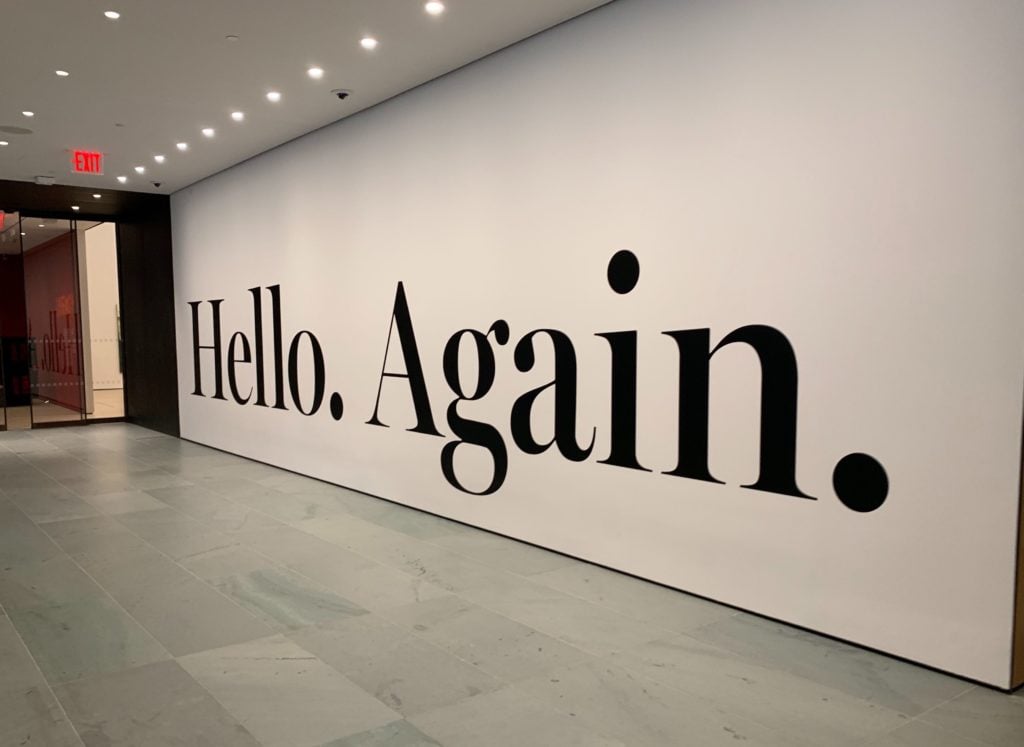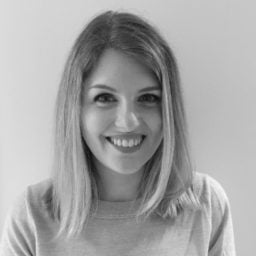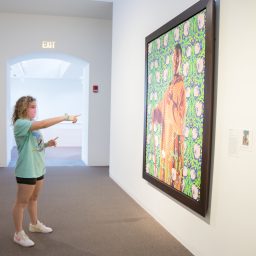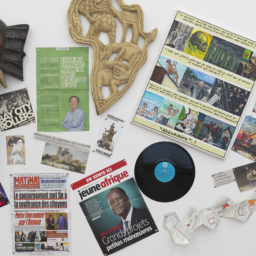This article is part of a package about the museum reopening process. For a thorough how-to guide and checklist for how art institutions can safely and smoothly reopen, click here.
As museums across the US prepare to open their doors to visitors after lockdown, administrators must consider questions that never would have occurred to them just months ago. Is it safe to hang two small works of art next to each other? Is it possible to reconfigure every door to open automatically? What will make people feel safe enough to visit?
We published a planning tool to offer museums a general, practical checklist to approach these questions—but we also understand that every institution and community is unique.
To get a sense of the scope of the challenges facing individual institutions, we caught up with three museum directors in three different cities—Mary Ceruti of the Walker Art Center in Minneapolis; Franklin Sirmans of the Pérez Art Museum Miami; and Adam Levine of the Toledo Art Museum—who are in the midst of figuring out how to welcome back their publics.
Mary Ceruti, director, Walker Art Center
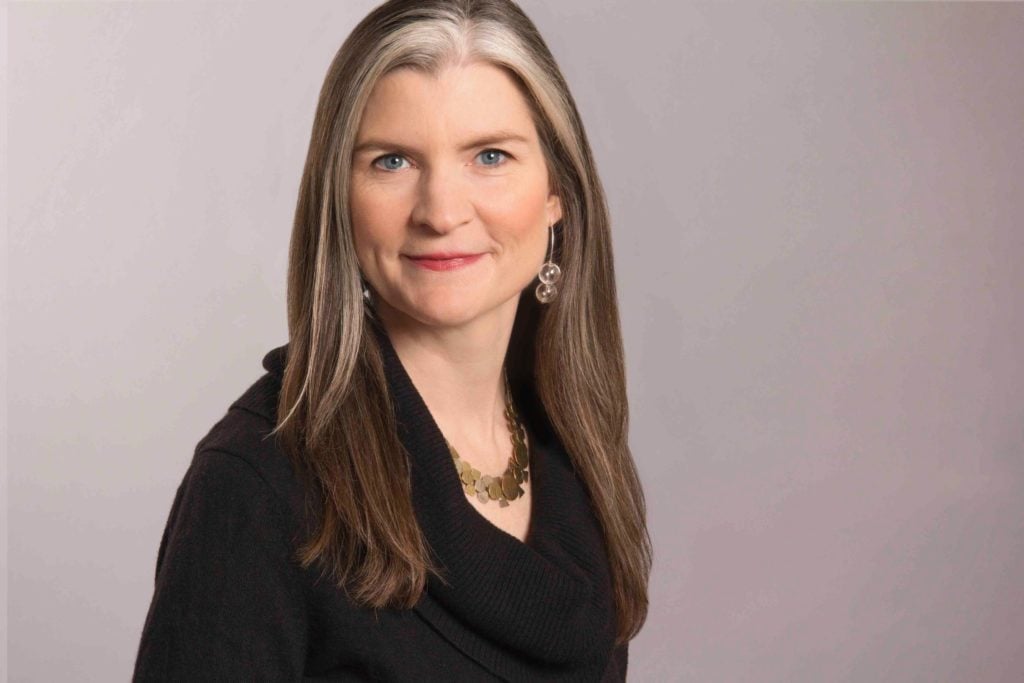
Mary Ceruti, director of the Walker Art Center. Photo by Troy Benson.
How will you determine when to reopen?
We’re using a few different inputs—official public health guidance, the field-wide collection of best practices, common sense, and direction from the governor. Because the Walker is multidisciplinary—we are a museum, theater, cinema, event space, restaurant, shop—we are looking at lots of different institutions.
Have you gotten guidance from the governor on where museums fall in the reopening plan?
I am not optimistic that he is going to give us any concrete information at this point. After I get off the phone with you, I have a call with a group of us—museums, performing arts venues, historical societies—that are meeting regularly with his office. They are waiting for us to develop solid guidelines as a group. It’s challenging because of course, we will all have different timelines and issues we need to address, so we are now breaking into subgroups.
How are you deciding what to open first?
We’re going to start with the galleries, which is a bit easier because museums are already designed to control how people move through those spaces. We also have HVAC systems and can make sure the filtration is good. It’s different from a theater, where you are putting people in an enclosed space for over an hour.
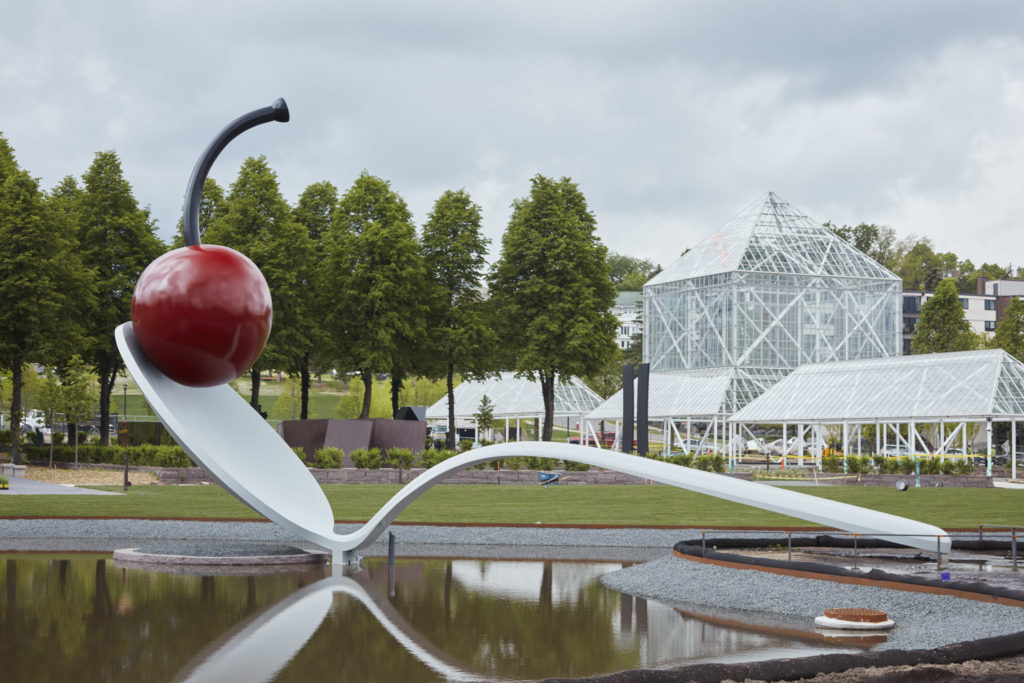
Minneapolis Sculpture Garden, Claes Oldenburg and Coosje van Bruggen, Spoonbridge and Cherry. Image courtesy of the Walker Art Center/Gene Pittman.
How are you adapting your exhibitions to this new reality?
The first show that we’ll be installing this summer is called “Designs for Different Futures,” a design exhibition that is about imagining how the world could change: the future of food, work, parenting. It feels like a really relevant exhibition, but it also has a lot of interactive elements, which we are now removing or showing without a mouse or touchscreen. As we go through the floorplan and checklist, the curators are also trying to write new guidelines for how you make an exhibition right now.
What’s an example of something that has to change?
A video gallery is a small, enclosed space, which usually, in temporary exhibitions, doesn’t have ventilation. We are also thinking about using directional speakers instead of headphones. But my big lesson in this—one that I have to keep teaching myself—is not to make decisions too soon. Information is evolving all the time, and we are going to make better decisions the more we know.
How do you weigh risk differently for the performing arts segment?
It’s complicated because there are all these questions about social distancing on stage, in dressing rooms, in the back of house. What does that look like? We’re really not there yet. We’re encouraging our performing arts programmers to think about using this time to work with artists in different ways. Maybe it’s residencies, maybe it’s research and development. Maybe a performing artist wants to think about audience differently and use the building instead of a theater space. I think it’s going to be a really interesting moment of experimentation.
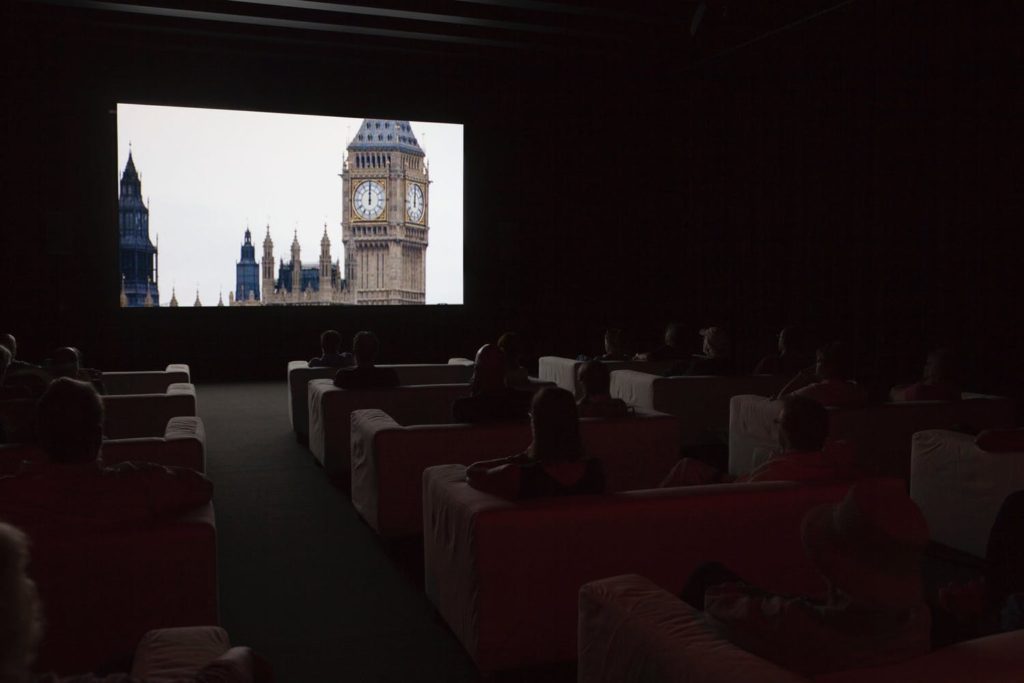
Christian Marclay, The Clock at the Walker Art Center. Image courtesy the artist and Walker Art Center.
I was recently listening to an interview with the chef Tom Colicchio, and he was describing the challenge of reopening restaurants. Since it still costs them the same amount of money to operate, even if they are at 25 percent capacity, it can actually be a money-losing proposition to reopen. Are you going to confront the same challenge?
Absolutely. Performing arts organizations have a bigger challenge in that regard because of their business model. The reality is that museums break even as nonprofits, but I don’t know any museum that earns all their revenue, so they are always operating at a loss. It’s just a question of, how much can you make up for it? In our case, it’s going to be a matter of subsidizing our budget to a greater degree from endowment draw and contributed income. You still have to size things: we will have fewer shows turning over in the next year or two. We will initially be open fewer days of the week. It’s also a bit of a different equation [from restaurants] because we aren’t in it to make money.
What has been the most difficult part of the reopening process?
So far, the hardest part is understanding not just the risks, but the psychology. Because there is so much uncertainty, there is a big range in terms of how people feel—both staff and potential audience. That is the biggest challenge: to give people confidence that we are doing everything we can, but also recognizing that we can’t create zero risk for everybody.
I think people are going to feel a lot better when they are in these environments. I was just saying to our visitor-services person, “You, me, and our designer need to go into the building in a socially distanced way and think through some of this stuff.” Our visitor-services people are thinking through every single step they take when they sell a ticket—a clean pen goes into the dirty pen box, etc. It’s amazing they can do it, but another part of me feels that it’s ripe for overthinking. Once we are in there doing these things, it isn’t going to feel so scary.
Franklin Sirmans, director, Pérez Art Museum Miami
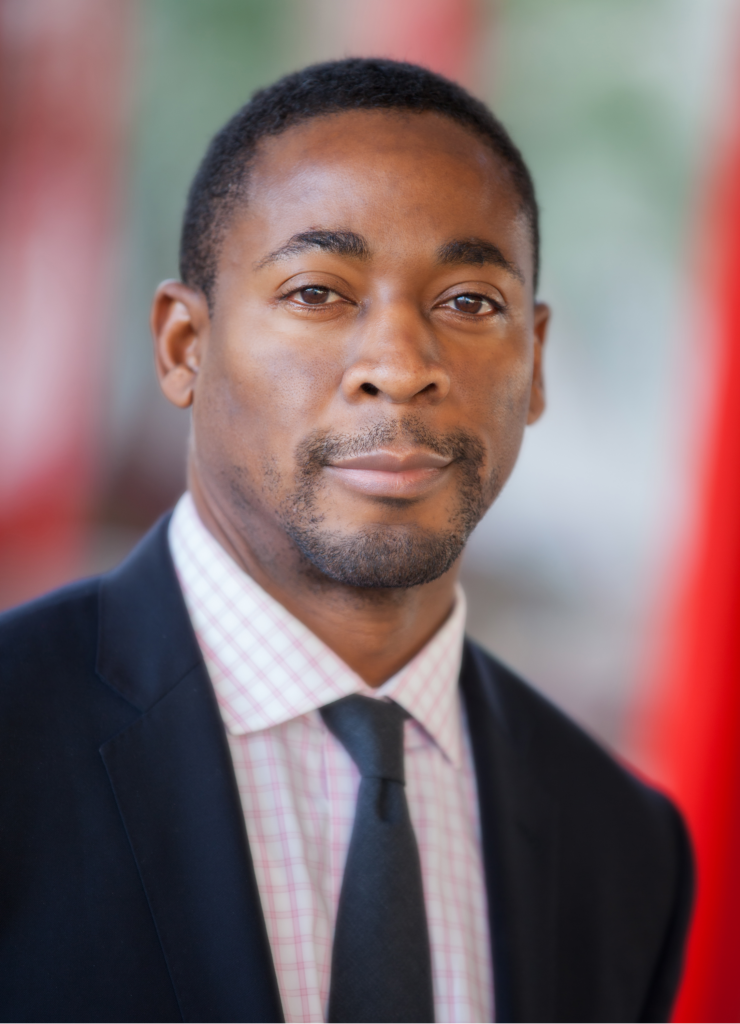
Franklin Sirmans, director of the Pérez Art Museum Miami. Image courtesy of the Pérez Art Museum Miami.
Florida was one of the first states to begin reopening, at the beginning of May—earlier than most experts said was advisable. On the other hand, PAMM was one of the first institutions to state publicly that it would remain closed all summer (weeks before the Metropolitan Museum of Art made a similar announcement). How did you make that call so quickly?
About a month after everyone started working from home on March 16, we were able to make an assessment of the impact of the closure. We looked at a three-month scenario that would put us at early summer and a six-month scenario, which would put us at the beginning of fall. Accounting for our research and looking specifically at our museum, where summer is the height of the tropical season and kids are getting ready to go back to school, it looked like September 1 was a good target date. If things were to drastically change, and you get nothing but a decrease in cases here, then we could try and accelerate that schedule. But right now it feels right.
What will be happening between now and then?
It allows us to do some things in phases. Can we get our sculpture garden up within the next six weeks? I think that’s a strong possibility. Can we, assuming that there is interest, do a really cool program on our beautiful portico looking out at Biscayne Bay, providing a scene of incredible solace for people to come back to? We’re connected to a 30-acre park. Can we bring people back in a way that makes outdoors the new indoors for a little bit? How do we take advantage of the fact that we are in a warm-weather place?
How are you caring for the building and the collection in the interim?
We have a ride-out team—we’re used to that because we always have a crew for hurricane season. That put us a step ahead. Then the question becomes, how do we add people to that team safely? Can we move a 20-something-foot-wide wood piece by Leonardo Drew under social distancing? How do the doors open? Do they open automatically? We close all the water fountains, obviously. Do we provide a new kind of signage that is digital? How do we bring people up from our parking lot if you can only have one or two people in an elevator all of a sudden?
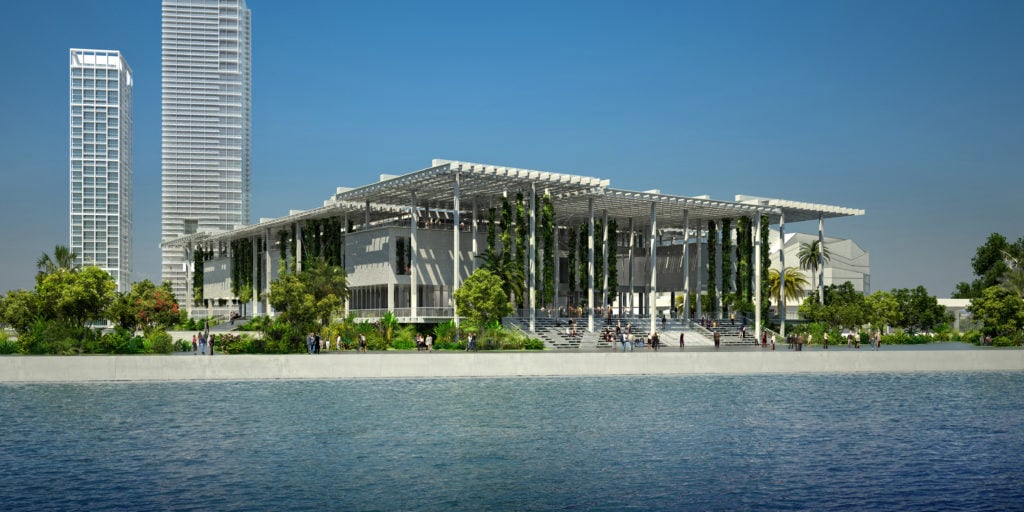
The Pérez Art Museum Miami. Image courtesy of the Pérez Art Museum Miami.
How is this closure affecting your programming? I know you all ended up cancelling one of your upcoming exhibitions, “Solidary & Solitary: The Joyner/Giuffrida Collection,” a show of abstract painting by black artists that has been traveling around the country.
It was a really hard decision to make, but I think one that had to be made, to let the show go. Do we just keep bumping everything back forever? All the works for the other exhibition [“Allied With Power: African and African Diaspora Art From the Jorge M. Pérez Collection”] are already in Miami. And we have other things to consider. We can’t put small, intimate works next to each other anymore, at least not for a while. So as we are thinking of expanding the [Pérez] show to take up the entire space, do we really need to add more work? Maybe not.
You have had to make dramatic changes to your staffing, laying off 15 people and furloughing 54 out of a staff of 120. How does that factor into your reopening plans?
Our assessments unfortunately involved letting go of some people in order to cover the decreased revenues of the entire year. We anticipated that the combined contributed and earned revenue was going to be off 20 to 30 percent, $3 million to $5 million. The majority of those people—visitor services, retail staff, teaching artists—are furloughed, and the idea is that they will come right back as soon as we reopen. We can’t function without them.
Have you been able to pay the staff on furlough?
We were able to pay them with no changes through May 4. So the changes went into effect very recently.
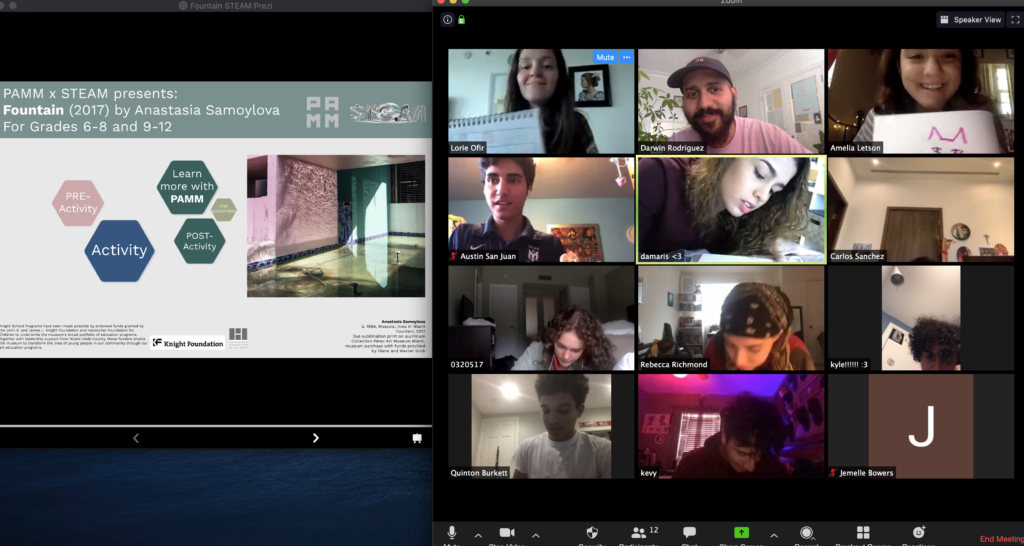
A PAMM virtual classroom visit. Image courtesy of the Pérez Art Museum Miami.
One subject that has come up in a lot of my conversations is access. For years leading up to this point, museums had been working to break down the barriers that had made them inaccessible to so much of the population. And now, certain barriers must be put up again. If you can only sell tickets online, you are inaccessible to those without internet access. If you are eliminating high-touch offerings like touchscreens, that makes it more difficult for disabled people to navigate the museum. How are you thinking about that paradox?
We knew then, and we know now more than ever, that we have to figure out a way to deal with inequity, to deal with the fact that there is a major disparity in access to the things we provide. We’ve done that through free days and targeted programs, but this has only exacerbated the problem. We have been continuing to provide school tours for classrooms—educators are taking students around the museum virtually on Zoom—but of course not everyone has internet access. We need to come up with new ways to function as a museum.
When you have a hurricane, the museum can be a source of relief supplies, people can come and pick them up. What’s hard about this invisible thing is that we feel like we can’t be active in our community. Everyone is trying to help each other—how to get back up and running safely is the number one concern.
Adam Levine, director, Toledo Museum of Art
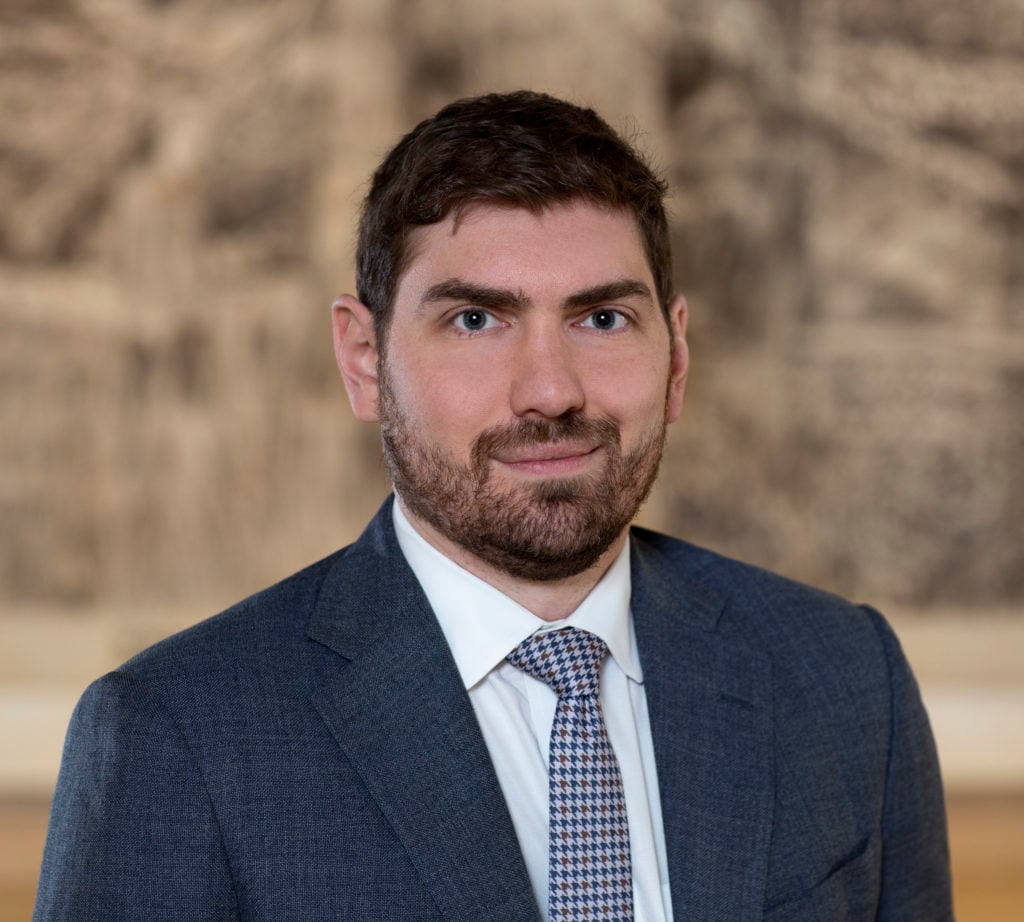
Adam M. Levine, the Edward Drummond and Florence Scott Libbey Director, President and CEO of the Toledo Museum of Art. Image courtesy of the Toledo Museum of Art.
You took this job as the country was going on lockdown. What was that like?
This is an unprecedented moment, obviously. But I had spent six years in Toledo previously [before my prior job], and that certainly helped. The onboarding process went from listening to people in person to over the phone and on Zoom.
How are you going to determine when to reopen?
We will not reopen before the governor says it’s OK to do so. Ohio’s stay-at-home order expires on May 29, so we have been working toward the following month—and even if we aren’t allowed, it doesn’t hurt to be over prepared. We created a task force and identified three hurdles we needed to clear: the rearranging of physical space, the generation of HR policies, and the provision of personal protective equipment [PPE] to our team. There was no circumstance in which we would reopen to visitors before we had staff back in the building. So phase one is getting staff back, with a phased reopening for our audience in the weeks to follow.
How are you working to adapt the office space?
In Ohio, offices were able to reopen on May 4. But we still have not brought staff back to the museum. Our utilities, maintenance, and IT staff are in the building this week reorienting the space. Then we are having an infectious-disease expert come in to review our layouts.

The Toledo Museum of Art is situated on nearly 40 acres in the city’s Old West End neighborhood. Image courtesy of the Toledo Museum of Art.
What sort of changes are you making?
This is a place where museums have a competitive advantage: we have preparators on staff and we have Plexiglas because we make vitrines, so we are actually able to make our own barriers. And our installation designer designed the Plexiglas barriers so they are incredibly elegant to look at. We will continue to promote working from home to the extent that’s possible.
The issue [of social distancing] is not so much in the gallery space as the bottlenecks. The staff entrance is not configured to be a grand, spacious place. So staff will report to work in 15-minute increments for staggered entry. You also have to consider the fact that some employees will be hourly, so people will be compensated for wait time.
What safety measures are you looking to put in place when opening to the public?
All of our plans for staff and visitors will be subject to an industrial hygienist review: cashless environment, timed tickets, frontline staff behind plexiglass, temperature scanning on the way in. We’re aware that not everyone has access to an online resource to book a ticket, so we are making sure there is capacity for walk-ins. We did some sophisticated modeling for how people will migrate along a path in the museum. We’ve had that flow and our opening capacity approved by the fire marshal, so we are ready to go.
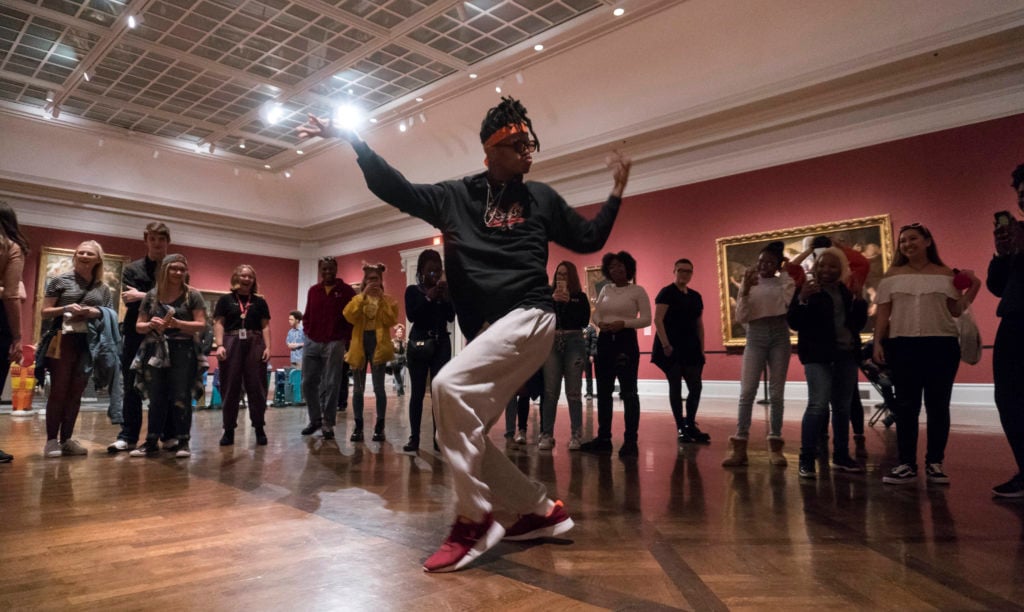
A Teen Night in the Toledo Museum of Art’s Great Gallery. Image courtesy of the Toledo Museum of Art.
What are the most logistically difficult measures to implement?
Nothing about this is easy. And nothing is easier than I thought. But the thing which is most important to understand is that visitors and staff need to be treated with tremendous empathy right now. The challenge and the opportunity is to make staff and visitors feel comfortable and to bring some prism of equity to this conversation and appreciate that different people have different expectations. Managing all of those concurrently is an awful lot of the job and communicating the decisions is a really complicated part of this moment. In the same way that institutions that have invested in digital systematically and over a long period are well positioned, institutions who have cultivated empathy will also be rewarded.
Does communicating about this to staff require different considerations than communicating about anything else?
Communicating through a crisis requires more frequent communication, but the nature of the communication—and our principles of being compassionate, accommodative, logical, and reasonable—are the same. You don’t have to have the answer to every question, but you do need to share that you are working on the answer to that question. People will give you grace if you are graceful back to them.
Are there certain artworks or areas to which you will have to limit access? How will new rules affect something like the Kusama “Infinity Room” you had on view before lockdown?
We have the Infinity Room Fireflies on the Water on loan from the Whitney, and that will be closed when we reopen. That is a good example of something that we need to think through methodologically to get us comfortable that it is safe for visitors, and to figure out how to make visitors feel safe.
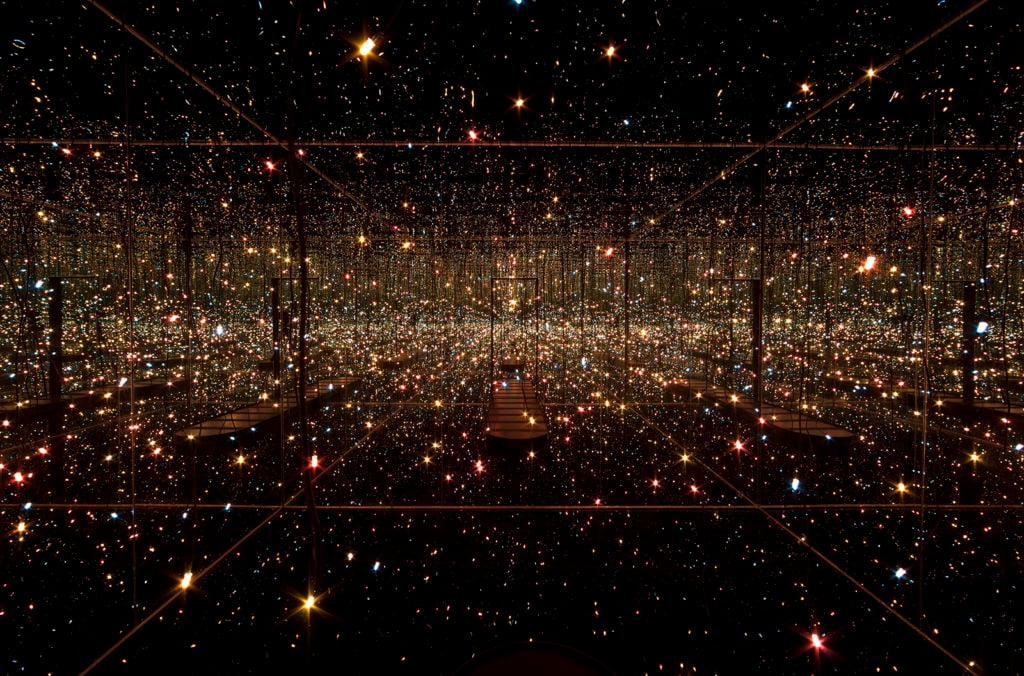
Yayoi Kusama,Fireflies on the Water (2002). Courtesy of the Whitney Museum of American Art, New York. Photograph by Sheldan C. Collins
Have you had to make any layoffs or furloughs during this period?
We have not laid anyone off or furloughed anyone, and we have made no pay cuts. We have just extended that policy through June 30.
So many museums have had to make cuts—how did you avoid it?
We valued our employees. The museum was well managed coming into this, we had liquidity, and we were able to increase liquidity over the run of the closure, leveraging some tools that were available to us and making a choice that retaining full employment was going to position us well in the short term as we spin back up, and in the long term, as a way to differentiate ourselves. We have 300 people on payroll, including part-time workers.
Does being an encyclopedic museum present different challenges than a contemporary art institution or kunsthalle?
I don’t know that there are any substantive differences. But the museum was founded in 1901, and that means it was around in 1918 [during the flu outbreak]. It’s very helpful to remember that institutions, including ours, have been through this before. On October 13, 1918, Mayor Cornell Schreiber issued a closing order and the Toledo Museum was closed for 46 days. We made it through that and we will make it through this.
